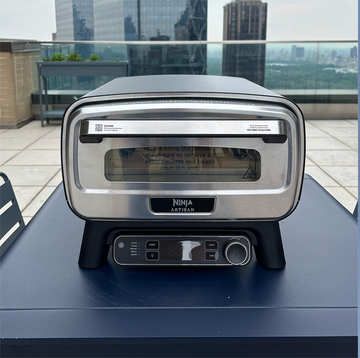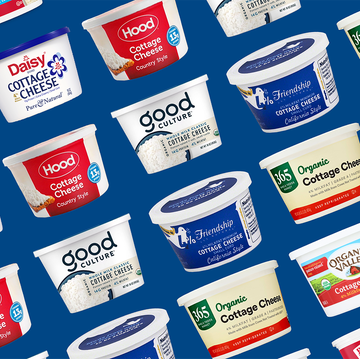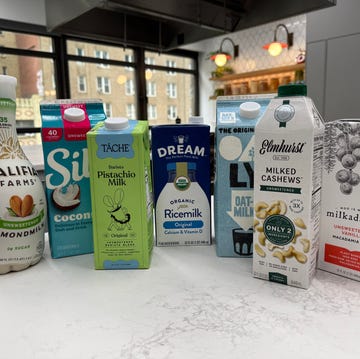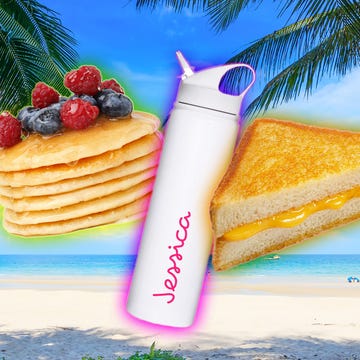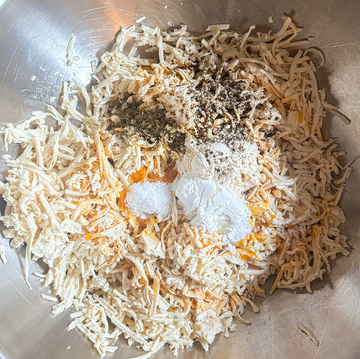How hot does food have to be in order to bring about a lawsuit? Hot (sorry) off the heels of a hefty ruling—Starbucks has been ordered to pay a drive-thru customer $50 million after hot tea spilled in his lap—it begs the question, how🔥hot🔥 is lawsuit hot?
More than a few customers have been awarded hearty sums after being burned by hot food or drinks in a restaurant. In recent years, a little girl's family was awarded $800,000 after she was burned by a McDonald's chicken McNugget. And that's not the first time McDonald's has found itself in the hot seat, so to speak. Back in 2023, a similar lawsuit was brought against the brand for serving coffee that was too hot, which also resulted in severe burns. These negligence lawsuits go way back—many people thought the infamous Liebeck v. McDonald's lawsuit in the '90s was frivolous at the time, but details of the case are quite similar to these more recent ones.
As an avid tea drinker, I often find my to-go tea to be so hot, I don't even chance having a sip until at least 15 minutes have passed after ordering. That's just not right!
We spoke to personal injury attorney Ash Watkins, who practices in both Nevada and California, to educate ourselves on what consumers should know if they ever experience anything similar when dining out.
How Hot Is Too Hot?
While Watkins explains that there is no legal maximum or minimum temperature to bring a lawsuit, she stresses that if you suffer an injury that requires medical treatment from food or beverage being served too hot, you can pursue a negligence claim. This means that you can seek damages and be reimbursed for costs related to any medical treatment, pain, lost wages, etc.
"Legally and practically, anything over 160°F is a red zone," explains Watkins. This means that anything over this temperature can result in second- or third-degree burns, scars, medical bills, and of course, pain. Watkins says that restaurants should ideally aim for temperatures between 125°F and 136°F for hot drinks. "Cranking it to 190°F like some chains do? That’s not flavor; that’s a lawsuit," she states.
For reference, the 2023 McDonald's coffee lawsuit involved temperatures upwards of 180°F. "Simply put, if it's too hot to handle without a warning, it's too hot and shouldn't be served," she tells Delish.
This can be tricky in particular when it comes to brewing tea. Depending on what type of tea you've ordered, ideal brewing temperatures can range from 175°F to 212°F. This means the onus is on the restaurant or café to ensure your beverage is substantially cooled before serving it.
Does Temperature Differ When It Comes To Food Vs. Drinks?
When it comes to temperature differentiation between food and beverages, there really isn't any difference. Generally, anything over 110°F can cause superficial burns, explains Watkins, while prolonged exposure to temperatures above 160°F can lead to second- or third-degree burns. "This is true for both food and beverages," she says.
However, there are different standards between food and beverages when it comes to food safety—hot food should be kept above 140°F in order to avoid bacterial growth, yet under 160°F to avoid injury. According to USDA guidelines, the minimum internal temperatures required for different foods and meats to prevent food-borne illness range from 145°F for beef, pork, and shellfish to 165°F for casseroles, poultry, and reheating leftovers. This means restaurants should often wait for food to cool slightly before serving.
Watkins explains that in general, "coffee is served at 160°F, which would take approximately 20 seconds of skin contact before it would result in the third degree burns that the McDonald’s plaintiff sustained in only a few seconds." (The burns were so severe that they necessitated skin grafts and other procedures, causing permanent disfigurement to the plaintiff's genitals). Conversely, serving hot beverages at a reduced temperature "provides the consumer with an extra 15 seconds to wipe off any liquid that gets spilled on their skin before it could cause permanent injuries," she notes.
Context Matters
Just because something you're served might be a bit too hot to handle, doesn't mean you're ready to bring about a case. "I’ve seen more cases where the temperature of the food or beverage involved in the accident is only a piece to a larger puzzle to determine liability and negligence," explains Watkins. Just look at the recent Starbucks lawsuit: while the tea served was clearly way too hot, the court ruling found the employee also failed to properly secure the cup in the to-go tray, making it a double whammy of accidents.
Watkins gives us another example. "Serving a hot beverage at 120° F seems more than reasonable, right? Now what if I told you the drink was hot chocolate and it was being served to kindergarten students, who are known for routinely spilling their juice and milk during lunch? That context changes everything. A drink might be being served at a reasonable temperature in one context, but in a different setting, it could be a lawsuit waiting to happen."
When it comes down to it, if a business fails to provide reasonable care and that failure causes harm to someone, they can and should be found negligent, says Watkins. "Proper employee training when serving hot food and beverages is important to ensure customer safety," she continues. If something like this ever happens to you, she recommends completing an incident report with the store or restaurant and seeking immediate medical care to treat your injuries.





